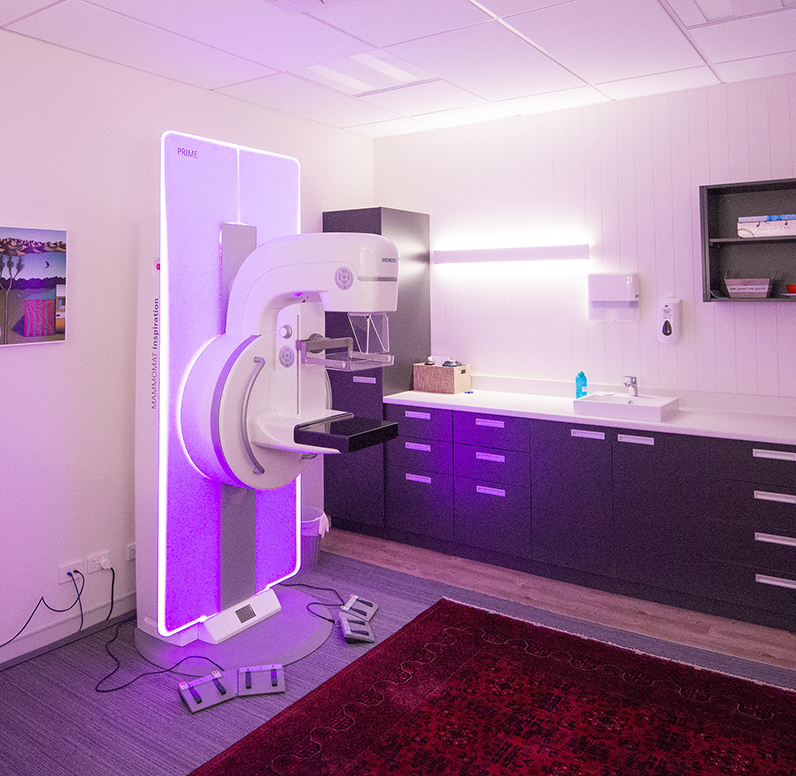A Three-dimensional (3D) mammogram, also known as breast tomosynthesis, is a type of digital mammography in which x-ray machines are used to take many pictures of thin slices of the breast to produce a 3D image.
What is a Three Dimensional (3D) mammogram?
A Three-dimensional (3D) mammogram, also known as breast tomosynthesis, is a type of digital mammography in which x-ray machines are used to take many pictures of thin slices of the breast to produce a 3D image. This process is similar to how a computed tomography (CT) scanner produces images of structures inside of the body.

Cancer visible on the right 3D mammogram but not the left 2D mammogram.
With a mammogram, glandular and fibrous tissue is white and fat is seen as black.
Cancers are also seen as white so they can hide in normal glandular breast tissue, particularly if the breasts are dense.
The 3D tomosynthesis takes images through the breast while the mammogram is taken and the computer reconstructs this into 1mm slices through the breast.
Our specialist radiologist reads this in conjunction with the state of the art 2D digital images.
This improves cancer detection and reduces the number of unnecessary biopsies.
Why are we using this technology?
- Increases the cancer detection rate
- Reduces false negative mammogram results especially in women with dense breast tissue
- Reduces the recall rate
- Reduces unnecessary biopsies
- Provides a 3D image to the surgeon

What about the radiation dose?
We have dose reducing software so the total radiation is not significantly different to previous imaging.
Is it comfortable?
The new technology uses less compression and takes about 20 seconds longer to take the image than standard film mammography. The modern design has patient comfort in mind.
Pre Examination
Before your Examination
-
On the day of your mammogram please do not use deodorants, talcum powder or body lotions in the breast or underarm area. You are welcome to bring them with you to apply after your examination.
-
You will need to undress from the waist up so it is advisable to wear a skirt or trousers. There will be a comfortable cape or gown available for you to wear.
Upon Arrival
Please remember to bring the referral note from your doctor.
We encourage you to bring along any previous mammograms to your appointment, it is important for the Radiologists interpreting the mammogram to have previous studies for comparison in order to look for any areas of change.
Your Examination
A skilled, qualified mammographer will take at least two images of each breast. Each breast is gently placed on the mammography machine and lightly compressed with a plastic paddle. This flattening of the breast reduces the breast thickness and hold the breast still, which reduces the radiation dose and optimises the quality of the image.
Most women describe the compression as uncomfortable, rather than painful. If you find the compression painful, please discuss your concerns with the mammographer who will make every effort to eliminate any distress.
Sometimes further mammograms are needed to show an area of the breast more clearly. Don't be overly concerned if this occurs. An ultrasound scan may also be necessary to complete your examination.
Post Examination
After the images are taken, you will be asked to wait until the mammographer has viewed them to see if any more are needed.
Your images will then be read independently by at least two Radiologists and a report will be sent to your referring doctor.
A small number of women will need further investigations after a mammogram. This may be additional mammography or an ultrasound. A recall does not mean you have breast cancer. If you require further imaging we will be in contact with you.





